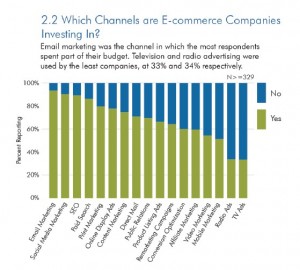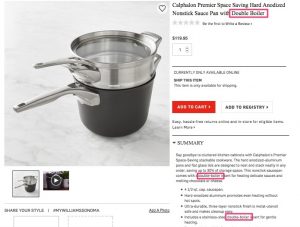— January 10, 2019

Let’s face it; we all know it. 2019 is going to be a year of challenge and change and for some businesses there will be changes right across the spectrum: political, economic, social and technological – or PESTR if you add regulation or PESTLE if you add legal and ethical considerations.
But how is this going to impact our customers, our people and ultimately how we do business?
As humans we hate uncertainty. Psychology tells us that uncertainty means inaction. Let’s take a real-life example. I’ve been dithering about buying a new fridge (and let me tell you that the words ‘I’ and ‘dithering’ aren’t normal bedfellows) but despite the lures of the commercials bombarding me, I’m holding off to see what’s going to happen in a few months’ time. I’m telling my increasingly-irritated husband that I’m hedging my bets and carefully weighing up what I want, what we should be willing to pay, whose fridges will be obsolete before the end of January, and whether there’s going to be a ‘fire sale’ at some point in late March. In other words, while I am doing my best to convince my husband (and me) that I am being careful and canny, the truth is I’m actually dithering because I just. don’t. know.
Popping my professional hat on, I’m seeing the business equivalent to fridge-buying dithering starting to creep in.
Faced with uncomfortable scenarios, the ‘keep calm and carry on’ approach to business suddenly looks attractive. The trouble is, behaving like an ostrich and popping our heads in the sand now will put us behind the competition when the impact of the changes that lie ahead finally become clearer. The ability to adapt to change means considering a range of likely scenarios and planning for them, not only in financial terms but more fundamentally challenging our current corporate beliefs. Reassessing the total value proposition of the business must be an intrinsic part of this assess and challenge process.
Get your head out of the sand and get ready for ’19
Top 10 Questions for Assessing your Value Proposition
If you want to avoid ostrich syndrome, sharpen your market position, and get ahead of the game, then may I suggest you have a crack at answering the following 10 questions.
They’re specifically designed to help you check whether your total value proposition is in good shape, whether it needs attention, and where to focus your effort: on your customers, your people, your business culture, and / or your product or service offerings. If you can’t answer some of these questions in detail, then you will know your total value proposition needs an update:
1) What do your customers value and not value about working with you?
It’s equally important to know and be very clear about those 3 or 4 things that make customers come back to you repeatedly and also those few things that customers could do without. These might be aspects of your offerings, but they could just as easily be more emotional things such as levels of trust, working relationships, and account management delivering valuable insights.
When we are customers, we have an implicit hierarchy of why we do business with any company. Finding out what that hierarchy is for your customers and your business, then making it explicit, is at the heart of developing your total value proposition.
2) Are sales faltering? Do you know precisely why? It’s easy to assume this is due to the uncertainty in the economy … but is it really?
There could be many reasons for weakening sales. It could be due to outdated competitive and market positioning, inadequate products and services, the skills of the sales people or poor sales leadership, weak marketing and limited brand exposure – any of these reasons and many more against a backdrop of a weak economy. However, we have worked with businesses that regularly buck the economic trend and turn themselves completely around in recessionary times by focusing on creating and building a new total value proposition that’s built on truth, not hype.
3) Are you always chasing new business?
If you’re always chasing new business and find it difficult to win repeat business from existing customers, then you need to find out why your customers are not totally happy. It could be that offerings are poorly constructed or that sales compensation structures are geared towards new wins only. For most businesses it’s too costly to continually go chasing new business.
4) Who are you targeting? (Geography/sector/sub-sector/job title/stakeholders)
Are you precise about what countries you are selling in or want to enter? What market sectors and sub-sectors you’re going to focus on targeting in each different country? Within each market sector/sub-sector who are the different types of buyers and influencers you’re going to target? What are the job titles of the various buyers and influencers? What does the whole stakeholder map look like and who holds the power / influences buying decisions?
You need to be very clear and detailed about your targeting plans and how your offerings match your target profiles.
5) For each of the above target groups, what risks do your customers perceive if they choose to work with you?
Understanding risk means that you can attempt to mitigate that risk. This requires honesty, insight and research. A typical risk for smaller companies might be size – you may be perceived as too small both financially and number of people, or for larger companies it can be lack of evidence or proven track record in a particular sector. You need to know.
6) What ‘pain relief’ do you offer your customers?
A basic selling point; you need to be able to explain what pain your offerings will take away from customers. What business issues or problems can you resolve for them? It’s easy to tell customers what you do, or what benefits your products or services deliver, but can you put yourself in your customers’ shoes and help them to address the business issues they face? If you can’t answer that then you need to go and find out…or qualitative insights and experiences research, as we tend to call it.
7) What are your offerings that will both relieve this pain and add measurable value?
Can you describe your offerings in detail and how all your offerings fit together e.g. what products and services might go together to make up a tailored solution?
If you can’t, then you need to spend more time with your customers understanding how your offerings make a difference to them. You need to know and be able to quantify in detail what each offering does, how it saves time, reduces costs, increases revenue, improves productivity etc.
8) How are you different from your competition?
Do you know who your competition really is, as well as the substitutes and alternatives to your offerings? Where do your offerings have parity and where / how do they differ? How do those differences translate into benefits and real value for customers?
If you are not clear or not up-to-date because of innovation or disruptors entering your marketplace, then you need more research in order to be able to demonstrate and differentiate your value within this new competitive landscape.
9) How do you provide evidence to support your claims of value?
Do you have case studies and customer testimonials (ideally with customers named but generic if not), total cost of ownership or ROI tools / models, articles or papers written together with customers, independent or proprietary research that supports your claims about your results that can be made public?
Are you providing enough proof to your prospects and customers or is lack of evidence prolonging your sales cycle? Providing evidence can help de-risking the buying journey and ensure move through the market review process carried out by your potential customers.
10) Have you clearly constructed your value stories and messages across all internal and external communications?
External messaging is about layering, using a mix of channels and mediums to build confidence in your potential buyers that you can deliver their expectations of value.
Let’s face it – buyers do more research than ever and most of it is carried out before they begin any discussion with sales. The brand can no longer be a corporate promotional activity with no relevance to the sales process – customers expect a positive brand experience at every touch point with the organisation. Internally all staff need to understand how their behaviour impacts on customer experience – the way they interact or speak with customers will either support or taint customer value.
Ultimately value is defined by your customers and their experience of your business and not by what you say about yourself. How many potential sales or customers are lost because emotional needs are not understood or even considered? Customers’ buying decisions are never one-dimensional.
All the questions above have an equal weighting because all the points are interconnected. If your answers to the 10 questions have the ‘dither’ factor in them (and let’s be honest here), then it is time to reassess your core value and how you’re delivering value to your customers.
Value like beauty is contextual; it’s in the eye of the beholder. It depends not only on functional, rational factors such as price, security and speed but also on emotional factors such as, ‘can I trust this company?’ and ‘might they let me down, how will this make me look?’. People are often unaware that they are making buying decisions based on unconscious, emotional factors. That’s why just asking people what they want doesn’t work.
A renewed value proposition brings directness, clarity and simplicity into what you do, how you think about your company and how you portray this to customers, both through your offerings and communications.
No more head in the sand, no more dithering. Let’s get engaging with customers and punching up that value proposition to get ahead of the competition in a challenging market. Right – I’m off to buy a new set of kitchen units. It turns out the fridge wasn’t actually the issue…
Business & Finance Articles on Business 2 Community
(48)






